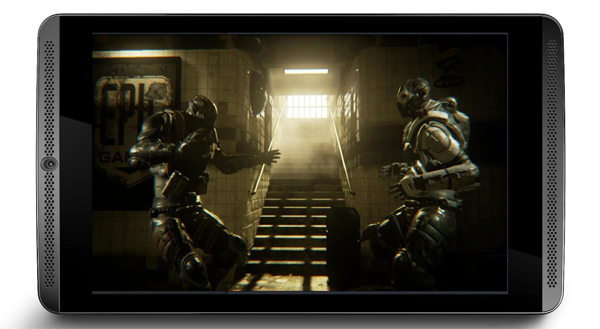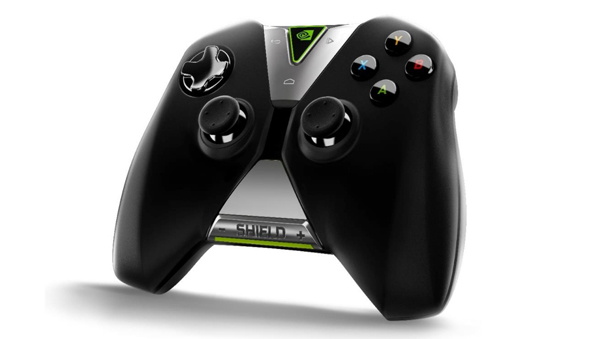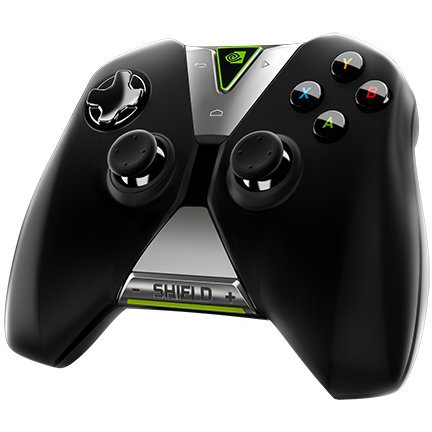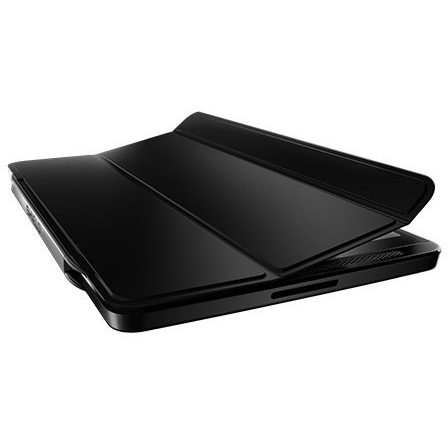Nvidia Shield Tablet And Shield Controller Review
The Shield Tablet, powered by Nvidia’s Tegra K1 SoC, deftly handles browsing and media playback duties. Combining it with the wireless Shield Controller transforms the 8-inch device into an exciting mobile gaming platform.
A Multifaceted Shield Worth Carrying Into Battle
Looking into the crystal ball, Nvidia saw a tablet that excelled at media consumption, productivity and mobile gaming, launching a quest that spawned the Tegra Note 7, a decent general-purpose tablet, and the Shield Portable, a potent handheld gaming device. With the experience points gained from these side quests, Nvidia reaches the end of its journey and delivers the Shield Tablet and Shield Controller, fulfilling the initial prophecy.
Powering the Shield Tablet is Nvidia’s Tegra K1 SoC. The Cortex-A15 cores, newly revised and manufactured on a 28nm process, are able to reach higher clock rates with lower power consumption, delivering excellent performance surpassed only by Apple’s Cyclone architecture.
But the real gem inside Tegra K1 is the Kepler-based GPU. The fact that Nvidia was able to take a desktop-class architecture and shrink its power envelope down to something that works in a handheld tablet is nothing short of amazing. Sure, it still uses too much power to be viable in a phone, and its battery life in a tablet isn’t stellar either. But the performance increase, upwards of 1.8x higher than the recently-released Adreno 420, is impressive.
With such a leap in performance, it appears the Tegra K1 will remain atop the benchmark charts well into 2015. The release of the iPhone 6 gives us our first look at Imagination’s latest PowerVR Series6XT GPU. The GX6450 variant in the iPhone doesn’t come close to matching Kepler’s performance. We’ll have to wait for the next iPad to see if Apple makes an A8X with better performance. Further out is Snapdragon 810, which should surface in the first half of 2015. Qualcomm expects the Adreno 430 to be around 30% faster than Adreno 420. Based on our benchmarks, this won’t be enough to beat Kepler. And by then, Nvidia will have moved on to Maxwell.
The Shield Tablet has an understated, stealthy appearance with good build quality. Although slightly larger and heavier than other 8” tablets, I didn’t find this to be an issue while actually using it.
The 8” screen is a reasonable compromise between portability, usability and quality. For a decent gaming experience, the tablet needs to be within close proximity for the title to feel immersive and for on-screen objects, especially text, to be discernible. Personally, I prefer the larger screen area offered by ~10” tablets, but the Shield Tablet at least uses the preferable 16:10 aspect ratio. Similar to screen size, panel quality is also a compromise, with other small form factor tablets offering higher pixel densities, peak brightness, and wider color gamuts. Fortunately, these shortcomings were rarely noticeable during use, at least by me.
The Shield Tablet’s front-facing stereo speakers are a nice feature even if they’re only average in sound quality. They do, however, offer enough spatial separation to give directional cues while gaming.
Get Tom's Hardware's best news and in-depth reviews, straight to your inbox.
With so much emphasis on performance and gaming, it’s easy to overlook the included stylus. Nvidia’s DirectStylus 2 technology works extremely well. It’s precise, includes pressure sensitivity, there’s almost no input lag and the chisel tip stylus feels similar to using a pen. The handwriting recognition is also very accurate, and I like that all of the processing takes place on the tablet rather than in the cloud.
The allure of the Shield Controller arises from all of the extra features that help integrate it with the tablet. Integration with Google Now simplifies interaction with the tablet, and using the small touch pad or joystick-controlled mouse pointer improves screen navigation when the tablet is out of reach. It also includes the standard Android navigation buttons, which do double duty for in-game navigation. Tight integration with the Shield Hub app severs any remaining dependency on the touchscreen interface.
The Shield Tablet’s software echoes the clean and efficient hardware design. It’s simply stock Android with a few Nvidia apps and flourishes to integrate the extra functions. The Shield Hub app uses a simple interface and does a decent job of making the Shield-specific features accessible from one place. It would be nice to have more control over selecting which apps appear inside the Shield Hub, though.
Features like the DirectStylus Launcher and the additional buttons added to the Android navigation bar help make the stylus feel like an integral part of the device. However, there needs to be an easier method for toggling between the keyboard and handwriting modes.
What really differentiates the Shield Tablet from its peers are the games and gaming features. There’s already a diverse Android gaming ecosystem with several titles using enhanced visuals that take advantage of Tegra K1’s additional capabilities. Features like Nvidia Grid and GameStream grant access to games stored in the cloud and on your PC (assuming you have a decent router and an Nvidia graphics card). I found both of these features to work well during testing, encountering a few game controller compatibility issues with older PC titles.
I did experience some minor issues with Wi-Fi connectivity. The Shield Tablet would consistently fail to reconnect to Wi-Fi after toggling airplane mode off and on. Turning Wi-Fi off and on would get it to reconnect. I also encountered problems pairing the Shield Controller with the tablet on several occasions. Again, toggling Wi-Fi off and on fixed the problem. Hopefully, this is just a driver issue that Nvidia will ameliorate in the near future.
At $299 for the Wi-Fi-only model, the Shield Tablet is a compelling buy, even for someone who doesn’t care about gaming. Adding in the cost for the Shield Controller and cover brings the total Shield package up to nearly $400. For that price you can buy an Xbox One or PS4, although they aren’t portable solutions. If you’re only interested in streaming PC games to an HDTV in another room, you could get a low-end laptop and use Steam’s In-Home Streaming feature. The Shield Tablet only makes sense for someone who actually needs a tablet; the stylus and portable gaming capabilities seal the deal.
A bevy of combatants and fierce competition have turned the market for small form factor tablets into a war zone, but excellent performance and unique, well-implemented features give the Shield Tablet an edge in battle.
Follow Matt and Tom's Hardware on Twitter.
Current page: A Multifaceted Shield Worth Carrying Into Battle
Prev Page Results: Battery And Throttling-
blubbey Those GPGPU benchmarks are ridiculous in comparison. It looks like a great bit of kit from what I've seen so far. A die shrunk Maxwell should be fantastic. Maybe even a lower clocked version just for power consumption? It'll still perform as well, if not better than the K1 at 750MHz (assuming 2 SMMs) I'd assume.Reply -
Memnarchon "Based on these results, Tegra K1 must be “a neural net processor; a learning computer” sent back through time to destroy all of the other SoCs that could lead a rebellion in the post-apocalyptic future."Reply
Lol this is epic! xD
Anyway, great and unique review. Especially for the so many GPGPU benchmarks.
Nvidia tablet at $299 seems to be a great buy. -
aberkae If maxwell brings double the performance per watt on the same node the next tegra chip on 20 nm node should be a home run for the companyReply -
deftonian Impressive, but I feel it's still missing that "umph" to get me to buy this and carry it around as an added device, next to my phone (Note 3). Maybe I just don't game enough on the android market or steam. Either way, I think it is impressive for a mobile gaming device and all the things it offers. I think they've started a great line and hope it grows into a successful tablet/gaming brand.Reply -
aberkae If maxwell brings double the performance per watt on the same node the next tegra chip on 20 nm node should be a home run for the companyReply -
gio2vanni86 The streaming a game while i'm at my friends house using my PC at home is what has me very interested. Plug into his TV and play amazing games he can only dream of. I'm in.Reply -
vithrell Just wait for Intel's Core M. It wont match the price (CPU alone will cost $300), but in fanless tablet form factor it wont have worthy competitor. Early GPU benchmarks give Core M 55k graphics score in Ice Storm, so more than 1.5x more power than Tegra K1. AND you can run full Windows on it. I wish Nvidia took x86 path with its cpu cores.Reply




